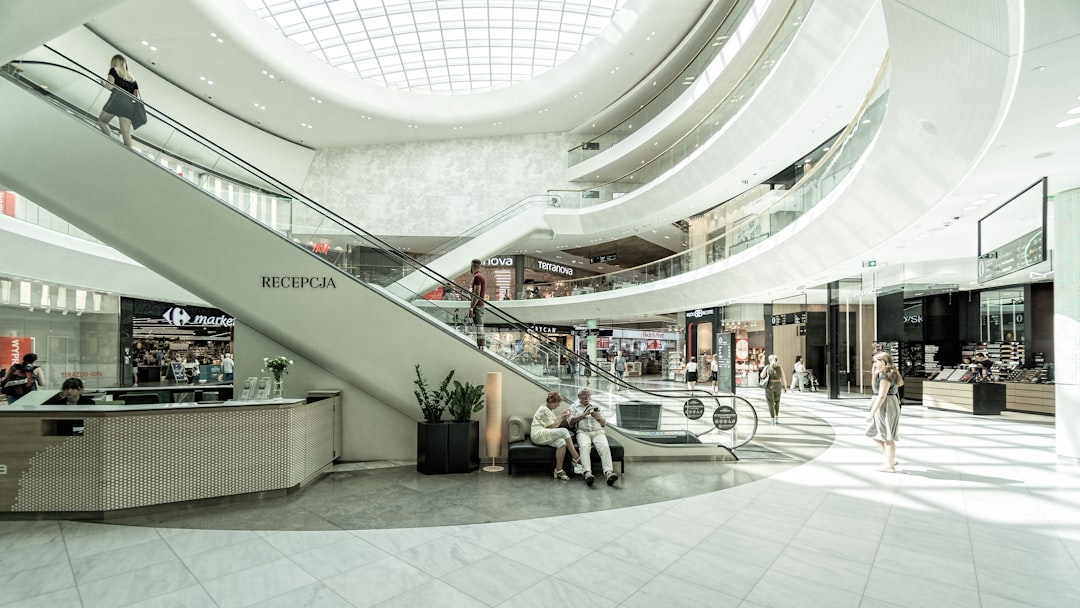Step into a world where retail transcends mere shopping and becomes an experience of monumental scale. From sprawling shopping centers that redefine luxury to bustling traditional markets that serve as global trade hubs, the sheer size and scope of these commercial behemoths are truly astonishing. This article will guide you through the definitive ranking of the world’s largest markets and shopping malls, offering insights into their unique features, economic impact, and what makes them stand out.
Prepare to discover the architectural marvels and vibrant cultural centers that attract millions of visitors annually, shaping global commerce and tourism. We’ll explore how these colossal spaces are measured, highlight the top contenders, and delve into their broader significance.
Defining “Largest”: Metrics for Mega-Spaces
When we talk about the “largest” retail spaces, it’s crucial to understand the metrics involved. For shopping malls, the most common and relevant measurement is Gross Leasable Area (GLA). This refers to the total floor area designed for tenant occupancy and exclusive use, including basements, mezzanines, and upper floors. It excludes common areas like walkways, parking, and utility spaces.
For markets, “largest” can be more ambiguous, often referring to total land area, number of vendors, volume of goods traded, or historical significance. We will consider a combination of these factors to provide a comprehensive overview.
Understanding Gross Leasable Area (GLA)
GLA is the industry standard because it directly reflects the amount of space available for retail activity. A higher GLA generally means more shops, more diverse offerings, and a greater capacity for visitors. It’s the most accurate way to compare the commercial scale of shopping centers globally.
The World’s Largest Shopping Malls by GLA
These colossal structures are not just places to shop; they are entertainment complexes, culinary destinations, and even cultural centers. Their sheer size allows for an unparalleled variety of stores, attractions, and services.
Top Contenders in Retail Grandeur
-
Iran Mall (Tehran, Iran)
Often cited as the largest mall in the world by total area, Iran Mall also boasts an immense Gross Leasable Area (GLA) of approximately 1.95 million square meters (21 million sq ft). Beyond its retail offerings, it features a hypermarket, cultural facilities like a library, a cinema complex, and even a hotel. Its design incorporates traditional Persian architecture, making it a unique blend of modern commerce and cultural heritage.

-
New South China Mall (Dongguan, China)
For many years, the New South China Mall held the title for the largest GLA globally, with approximately 660,000 square meters (7.1 million sq ft). While it famously struggled with occupancy in its early years, it remains a monumental structure. It features seven zones modeled on international cities, including Paris, Rome, and Amsterdam, complete with a replica Arc de Triomphe and a Venetian canal. -
SM City North EDSA (Quezon City, Philippines)
One of the largest malls in Southeast Asia, SM City North EDSA has a GLA of around 498,000 square meters (5.36 million sq ft) and has undergone numerous expansions. It includes a vast array of retail stores, restaurants, cinemas, and even an indoor park. It serves as a major transportation hub and a community center for millions in Metro Manila. -
The Dubai Mall (Dubai, UAE)
While not the absolute largest by GLA (approx. 502,000 square meters or 5.4 million sq ft), The Dubai Mall is arguably the most visited retail and entertainment destination in the world, attracting over 100 million visitors annually. It’s renowned for its luxury brands, the Dubai Aquarium & Underwater Zoo, an Olympic-sized ice rink, and its proximity to the Burj Khalifa. Its focus on experiential retail sets it apart.

These malls are more than just shopping centers; they are self-contained cities offering a full spectrum of activities, from leisure and entertainment to dining and cultural experiences.
Beyond Malls: The World’s Largest Markets
Markets, in their traditional sense, have been the heart of commerce for centuries. While different in structure from modern malls, some of these markets are immense in scale, offering unique goods and vibrant cultural experiences.
Global Trade Hubs and Historic Bazaars
-
Yiwu International Trade City (Yiwu, China)
Often referred to as the “largest small commodities wholesale market in the world,” Yiwu is not a traditional shopping mall but a massive complex dedicated to wholesale trade. It spans over 5.5 million square meters and houses more than 75,000 booths, selling everything from toys and electronics to textiles and hardware. It’s a critical hub in global supply chains.
Learn more about Yiwu’s global impact. -
Grand Bazaar (Istanbul, Turkey)
One of the oldest and largest covered markets in the world, the Grand Bazaar dates back to the 15th century. It boasts over 60 streets and 4,000 shops, attracting hundreds of thousands of visitors daily. Here, you can find jewelry, ceramics, spices, carpets, and antiques, all within a labyrinthine historical setting. It’s a significant cultural and commercial landmark.

-
Aalsmeer Flower Auction (Aalsmeer, Netherlands)
While not a retail market for consumers, this is the largest flower auction in the world by volume and value. It’s an immense building, covering an area of 999,000 square meters (10.7 million sq ft), where millions of flowers and plants are traded daily. It’s a fascinating example of a highly specialized, large-scale market.
These markets highlight the diverse forms that large-scale commerce can take, from modern, climate-controlled shopping havens to ancient, bustling trade routes.
The Economic and Social Impact of Mega-Retail
The construction and operation of these massive retail and market spaces have profound economic and social implications for their regions and beyond. They are not just buildings; they are economic engines.
Job Creation and Tourism Magnets
Mega-malls and large markets create tens of thousands of direct and indirect jobs, from retail staff and security to logistics and maintenance personnel. They also act as significant tourist attractions, drawing visitors from around the globe and boosting local economies through hospitality, transportation, and related services.
“These retail behemoths serve as microcosms of urban life, offering not just goods but experiences, entertainment, and social interaction, thereby becoming integral parts of their communities’ fabric.”
Their development often spurs infrastructure improvements, including roads, public transport, and utilities, further contributing to regional growth. They can also become symbols of national pride and economic prowess.
Future Trends in Large-Scale Retail
The retail landscape is constantly evolving, and even the largest malls and markets are adapting to new consumer behaviors and technological advancements.
Experiential Retail and Digital Integration
The future of mega-retail lies in offering more than just products. There’s a growing emphasis on experiential retail, where malls become destinations for entertainment, dining, wellness, and community events. This includes everything from indoor theme parks and concert venues to art installations and educational workshops.
Digital integration is also key. This involves seamless online-to-offline shopping experiences, personalized recommendations via apps, smart parking systems, and augmented reality features that enhance the physical shopping journey. Sustainability initiatives, such as green building practices and waste reduction programs, are also becoming increasingly important.
Plan Your Visit: Tips for Navigating Mega-Destinations
Visiting one of the world’s largest malls or markets can be an overwhelming yet exhilarating experience. Here are some tips to make the most of your trip:
- Plan Ahead: Research the mall or market’s layout, key stores, and attractions beforehand. Many have interactive maps online.
- Wear Comfortable Shoes: You’ll be doing a lot of walking!
- Utilize Information Desks: Staff can provide maps, directions, and information on events.
- Consider Off-Peak Hours: To avoid the biggest crowds, try visiting on weekdays or during non-holiday periods.
- Stay Hydrated: Especially in large, air-conditioned spaces, it’s easy to forget to drink water.
The world’s largest markets and shopping malls are more than just commercial spaces; they are testaments to human ambition, architectural prowess, and the enduring appeal of commerce. From the sprawling retail paradise of Iran Mall to the historic labyrinth of Istanbul’s Grand Bazaar, these destinations offer a unique glimpse into global trade and culture.
Whether you’re a serious shopper, a curious traveler, or an architecture enthusiast, exploring these retail giants promises an unforgettable experience. We encourage you to delve deeper into the fascinating world of mega-retail and discover the stories behind these incredible structures.
Which of these colossal shopping destinations would you most like to visit, and why? Share your thoughts in the comments below!
Further Reading:
